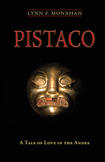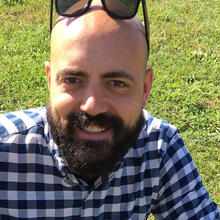Review: Echoes of Graham Greene in the Andes
My father was a diplomat, and one of his first posts was to Bolivia in the mid-1980s. I was 5 or 6 years old when we visited a rural village in the mountains. I vividly recall coming across a small hole in the middle of a cobblestone street in which the skeleton of a baby llama was nestled in a kind of ghostly nap. It is this kind of experience—the intrusion of a centuries-old tradition into the sensibilities of a modern American —that sits at the heart of Lynn Monahan’s gripping, unsettling novel, Pistaco.
The Rev. Steven McMahon has asked for an assignment in rural Peru. He discovers that the people in what is ostensibly a Catholic country adhere to what he delicately calls “syncretistic heresies.” Not least among these is the eponymous legend of the Pistaco, a shapeshifter spirit who sucks the fat from his victims, causing them to waste away slowly.
From its first pages, Lynn Monahan's novel Pistaco is suffused with a sense of dread.
Pistaco follows the interlocking stories of Father Steven and Cori, a teacher, both caught somewhere between running from and running to. Father Steven is running from an infatuation back home in Connecticut, but he longs to serve where there is real need, real poverty. Cori is running from a doomed relationship, hoping to find her place in the world. They meet when their bus to the rural farming village of Urpimarca is held up by corrupt local police moonlighting as highway robbers, and their connection as outsiders leads them to lean on one another as they adjust to their new circumstances.
Monahan has done a superb job of capturing the feel of Andean Latin America—the shabby metropolis of middle-class Lima, the precariousness of a bus ride up the ragged side of a mountain, the poverty and rich culture of the rural Quechua people. The astute reader will find echoes of Graham Greene’s The Power and the Glory.
From its first pages, Pistaco is also suffused with a sense of dread. Set in the late 1980s, the novel shows us Peru beset by the Shining Path guerillas, nativist ideologues waging an increasingly bloody terror war on the Peruvian people—a war creeping irrevocably closer to the tenuous peace of Urpimarca, the village where Father Steven and Cori are maybe, just maybe…. The rest as they say, is spoilers.
This article also appeared in print, under the headline “Echoes of Graham Greene,” in the January 7, 2019, issue.










